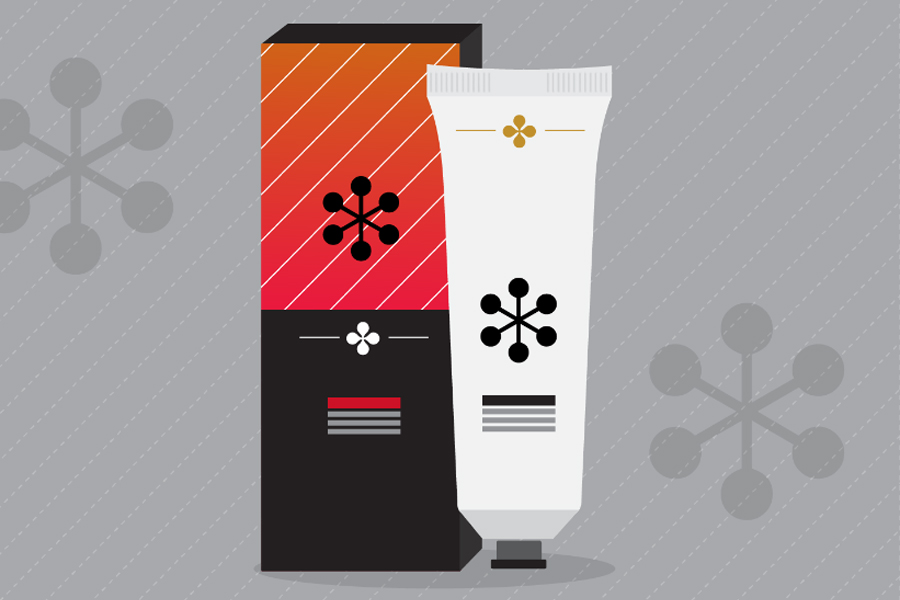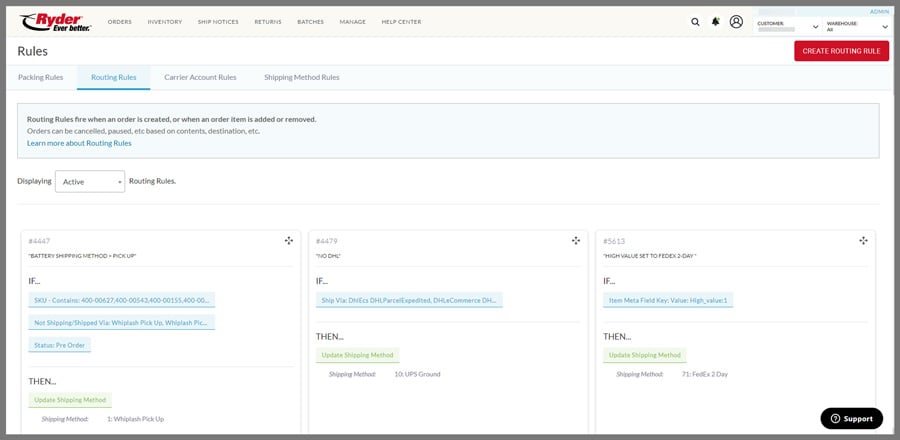Logistics
Warehousing & Fulfillment
Transportation
E-commerce
E-commerce Fulfillment Services
Lease & Maintenance
Semi Trucks
Supply Chain Technology
Logistics
E-commerce
Lease & Maintenance
Buy Used Trucks

If you've ever ordered and received a product online, you know how important packaging can be. Aside from actually protecting the precious contents, packaging has the power to change the full experience.
With simple branding or the use of inserts with QR codes or product guides, what was once a simple unboxing becomes an experience that closes the gap between online and offline retail.
When you purchase a product directly from a brick-and-mortar store, you're immediately immersed in a fully branded environment. There are images of products in use, quick guides, and even store associates who are ready to lend a hand.
But when you purchase from a store online, there aren't as many opportunities for that immersive brand journey.
This is where e-commerce packaging comes into play. With the right approach and a well-planned strategy, brands can begin to provide a more personalized packaging experience that creates strong customer relationships.
All of this being said, we're taking a look at the state of e-commerce, why packaging matters, and the most popular packaging trends to look out for in the new year.
In 2022, the e-commerce industry racked up more than 900 billion dollars across the US. Not only that, Statista reports that this number could exceed 1.7 trillion dollars by 2027. Among the most popular categories? Clothing, shoes, and consumer electronics.
It's a widely known fact that e-commerce surged while pandemic stay-at-home orders gave consumers little opportunity to purchase products in brick-and-mortar locations. Although not as big of a spike as 2020, we're still seeing a boost in shipping volumes nearly two years later.
Worldwide, there were over 150 billion parcels shipped in 2021 - a figure that has more than tripled over the past 7 years. The largest markets? China, the US, and Japan - which collectively accounted for 87% of global parcel volumes in 2021.
While e-commerce is no longer fueled by the necessity of staying inside, consumers have continued to shop online for convenience, speed, and personalization. At this point, it's hard to picture a world where e-commerce is not responsible for a large chunk of retail sales.
In fact, it's predicted that the e-commerce industry will account for over 20% of all retail sales across the globe - a far reach from the 10% just five years ago.
Simply put, e-commerce is continuing to flourish. For brands, this means the space is becoming increasingly crowded. They'll need to ensure a stellar experience on all fronts to stand out from the rest!
In e-commerce, the way an order is packed can do wonders. In addition to protective packaging that helps keep products safe, other materials like marketing inserts with QR codes and product guides ensure a seamless and memorable unboxing experience.
No longer reserved just for luxury brands, an unboxing experience with the proper packaging can help bridge the gap between the in-store and online shopping experience. The results? Higher brand loyalty and happier customers.
It's no surprise that the supply chain industry creates a hefty carbon footprint. E-commerce transportation accounts for 3% of global greenhouse gas emissions, but this number is predicted to grow to a whopping 17% in the next 28 years.
In an industry that relies on the transportation of products, over 60% of consumers expect brands to have well-planned sustainability initiatives. One of the easiest ways to do this? Sustainable packaging.
We've all had an order or two that was just a box inside of another box. Not only does this have a negative impact on the environment, but it can also raise shipping costs for merchants.
Carriers typically use a dimensional weight pricing strategy that takes the physical size of a package into account when determining costs. This means that if brands are using packaging that's too big for the size of their products, their shipping costs could spike.
When brands have a packaging strategy that incorporates DIM weight as well as cartonization to avoid any extra space or unnecessary materials, it's a better outcome for the merchant, the customer, and the earth.
Packaging automation is the process of picking and packing orders without the need for manual labor from associates. With increasing demand in the e-commerce space, more brands are turning to 3PLs that can provide automation within the packaging process. Why? Because automation can increase speed and reduce human error - ultimately boosting the overall customer experience. Quicker pick, pack, and ship = happier customers.
Although the e-commerce industry is thriving, it's vital for brands to make sure they're being as cost-savvy as possible within their operations in order to remain profitable. This includes the packaging industry, which can eat up a ton of costs for retailers who aren't within optimal DIM weight. Brands that focus on eliminating oversized packaging and increasing density will save a good chunk of change - they'll no longer be paying to ship air.
Sustainability has become more than just a buzzword in the e-commerce space, and it isn't slowing down in the new year. Brands who begin to implement eco-friendly practices in 2023 are more likely to boost customer loyalty and appeal to the larger masses.
Of course, when it comes to environmentally-friendly shipping, packaging materials matter. Rather than using plastic poly mailers, brands can look into sustainable packaging options like biodegradable materials and recyclable supplies.
One thing's for certain: e-commerce brands looking to revamp their e-commerce packaging should pay close attention to how sustainable their packaging material is.
With the rise of branded packaging materials, digital printing has become a key player in customized packaging. Consumers are constantly looking for an above-average customer experience from checkout to unboxing, and customized packaging helps provide this. It delights customers who aren't expecting it - and it satisfies those who are!
Plus, merchants who invest in branded packaging are taking center stage on social media platforms, where millions of consumers showcase their unboxing experiences daily.
In today's digital age, everything is 'smart.' Smart TVs, smartphones, smart cars. And, believe it or not, there's such a thing called smart packaging.
While it's not some sort of robot box that can unwrap itself, it's packaging that provides additional functionalities than simply housing and protecting a product in transit. Smart packaging consists of three different types of packaging: intelligent, active, and connected.
Intelligent packaging provides consumers and merchants alike with insights into the state of the product. For example, if a package has a perishable food item, intelligent packaging might monitor the temperature and send an alarm if the item is outside what's considered a safe environment for too long.
Active packaging adjusts the package's immediate environment to improve a product's quality rather than just tracking data. This includes oxygen absorbers or antimicrobial agents that enable a longer shelf life while the product is in transit.
Last but certainly not least, connected packaging 'communicates' with technology outside of the unboxing experience. For example, a QR code on a package could download an app with product information or interactive usage tutorials.
Connected packaging is one of the most important types of smart packaging because it gives users a digital-first experience and unique content in the otherwise manual task of unboxing an order.
Retailers can't really go wrong with return-ready packaging. Not only is it a more sustainable, cost-effective option for reverse logistics, but it also reduces friction for customers within the returns process. In e-commerce, at least 30% of all products ordered are returned - so having a seamless returns experience may be the deciding factor of whether a customer purchases with your brand again.
When it comes to e-commerce packaging solutions, a 3PL with a track record of operational expertise will come in handy for merchants. A dedicated ops team will be able to provide seamless value-added services like inserting marketing pamphlets, handwritten notes, gift wrapping, and more. Plus, logistics partners can implement cost-effective packaging strategies like tracking weight changes and maintaining optimal DIM weight.
With a technology-forward 3PL partner, brands can take advantage of a solution that includes real-time insights into every facet of their supply chain. This allows the partner and merchant to have complete visibility into inventory and orders - leading to a more streamlined pick and pack process.
For example, with the right technology, a merchant could be notified every time their inventory reaches a certain threshold so they can restock their supply and avoid any stockouts. In addition to inventory tracking, order control is another value-add from WMS technology.
The Ryder WMS uses rules-based targeting to create automated customized packaging. Rules will trigger when a specific criterion is present within an order. This could be a specific SKU that qualifies for special packaging design or free samples.

In addition to operations and technology, a good third-party logistics partner will be on the lookout for ways to improve their solutions at all times. Through quarterly business reviews or another decided cadence, brands can work with their partners to update their packaging, implement automation, improve sustainability strategies, and more.
No matter what vertical, brands in the e-commerce industry will need to make sure their packaging is fully up to par. While it may not seem like the most important step within the fulfillment process, packaging has one of the largest impacts on the customer experience.
Consumers want personalization, connection, and safety for their newest products - all things that packaging in itself can provide (with the right tools).
A box within a box within a box with absolutely no design just isn't making the cut anymore!